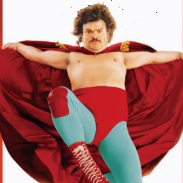Chaweng & Lamai - going forward.
-
Recently Browsing 0 members
- No registered users viewing this page.
-
Topics
-
-
Popular Contributors
-
-
Latest posts...
-
26
Was I crazy to buy a Neta V now the company is going bust?
Looks alright to me, and at that price even if you get just 4 or 5 years out of it it's essentially disposable. I spend more on laptops over the last 6 years 🤣 -
9
Older Retirees and Younger Partners in Rural Thailand: Accepted or Not?
How do we know, ask some Thai villagers -
26
Was I crazy to buy a Neta V now the company is going bust?
Not for me. I don't give much of a rat's about fresh dates either. The way safety or any kind of product testing and "certification" works, is that the only concern is to pass the test, not with the actual safety. I am not familiar auto crash tests, but I am pretty familiar with HVAC testing, and the tests do not mean much at the end of the day. -
158
Advise on buying a BYD car.
It is a BS 'test' done to meet mandatory Government regulations about 'safety and climate change'. Total and utter BS - do the lights work to the original specs?? It is about as useful as a vehicle inspection in Thailand - most cars here would not pass a test done in the West. -
27
Government 'not satisfied' with BBC response on Bob Vylan, Demands Accountability
Your the one that brought Tommy into a topic that has nothing to do with him......... -
77
Trump has abandoned the Ukraine.
Trump talks a good war but when the boys go in there shown up for what they are all bluff and buster. Wanna go through History and tell us Europeans what wars you won ??
-
-
Popular in The Pub
















.thumb.png.59631667ecf82c97db947523760c9cdd.png)

Recommended Posts
Create an account or sign in to comment
You need to be a member in order to leave a comment
Create an account
Sign up for a new account in our community. It's easy!
Register a new accountSign in
Already have an account? Sign in here.
Sign In Now